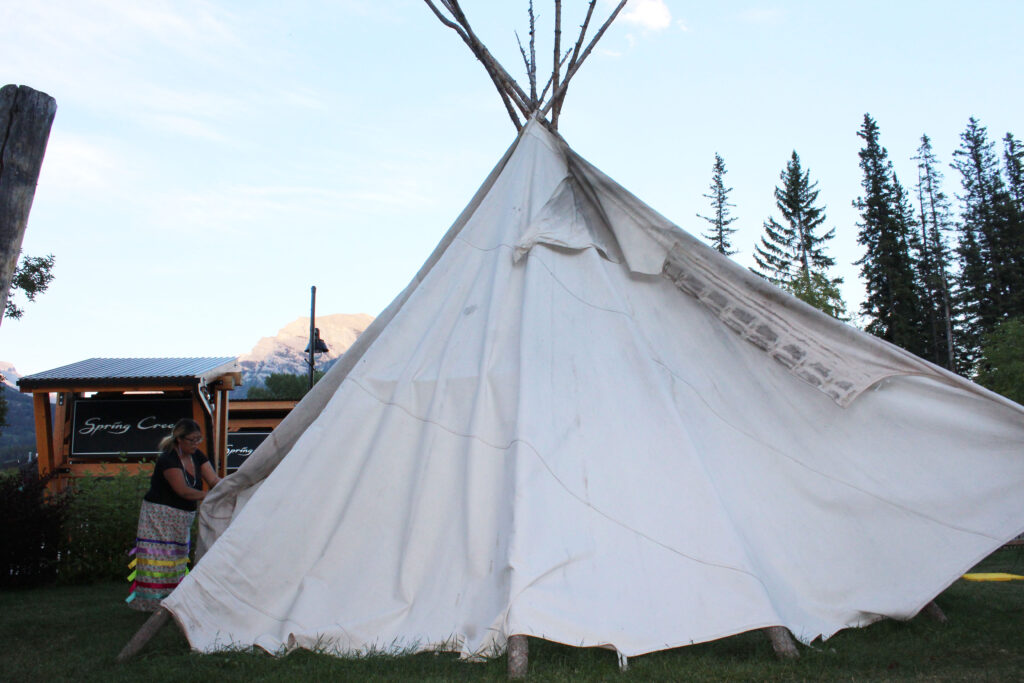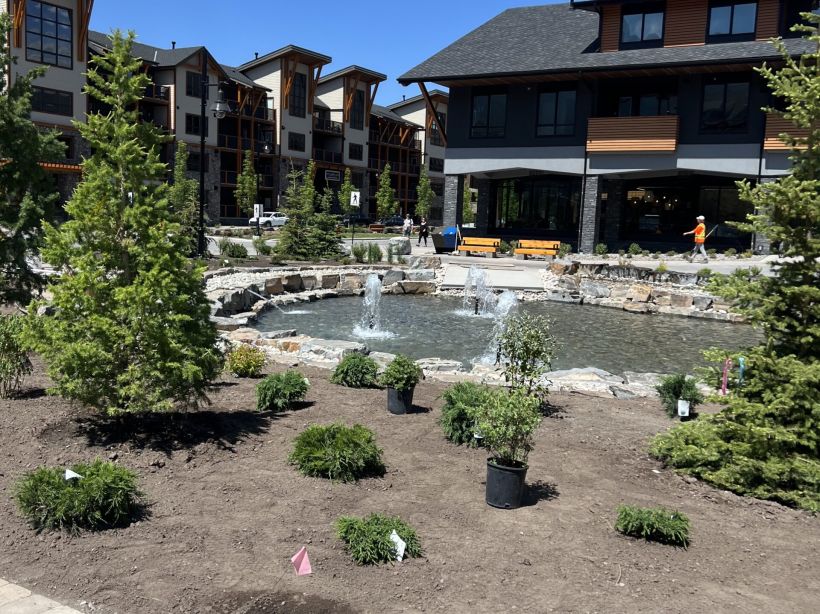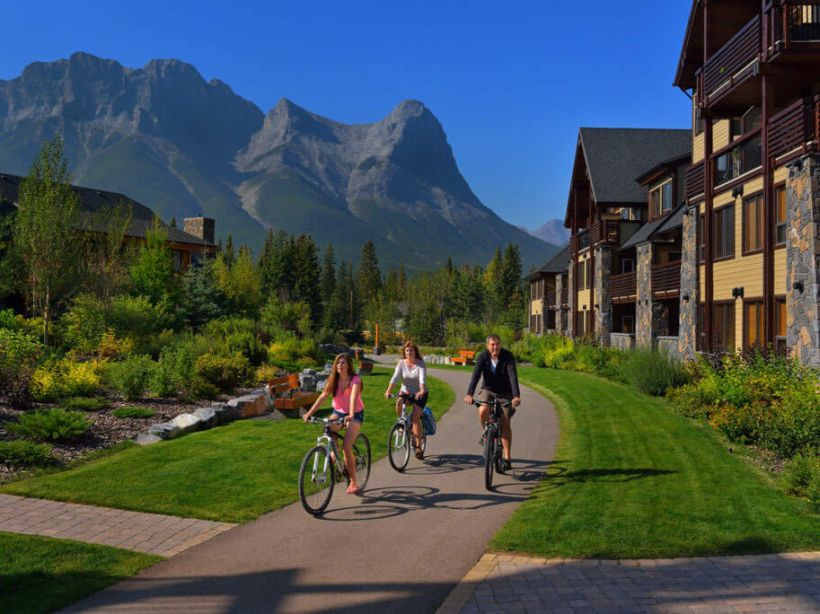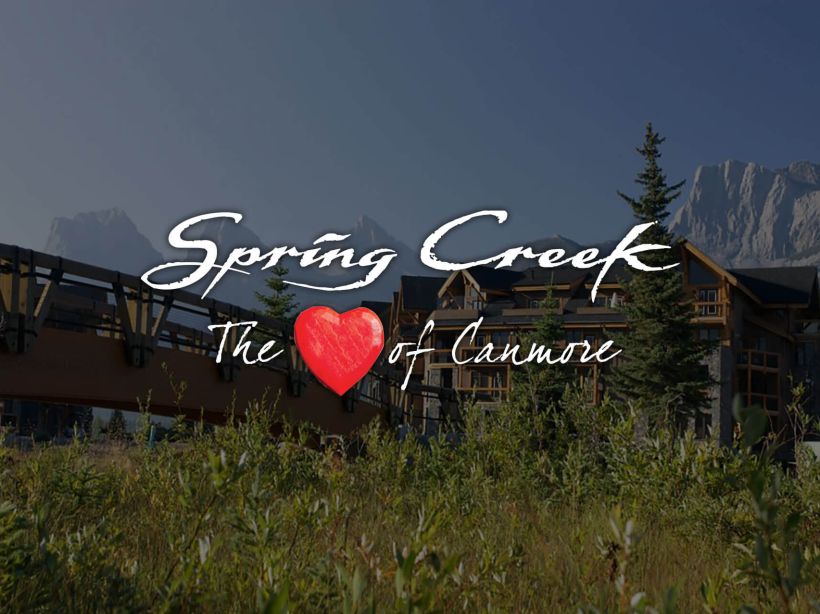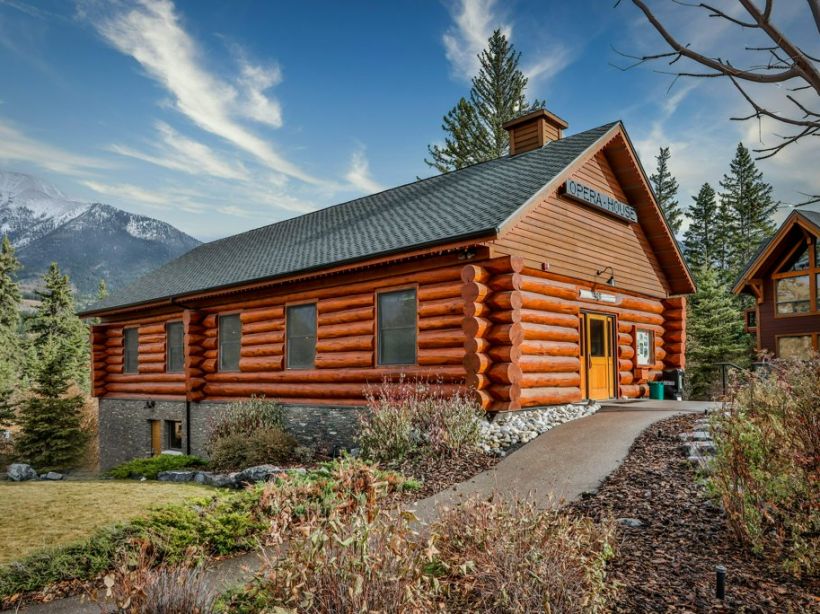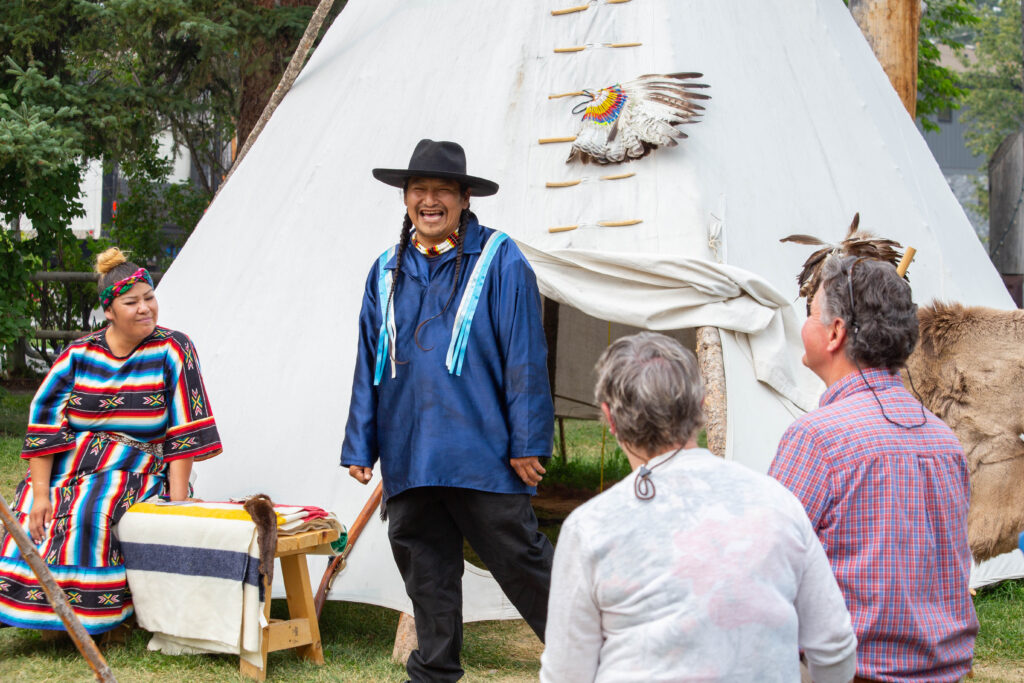
Canmore Museum, artsPlace and Stoney Nakoda partner for exciting cultural sharing opportunities in 2022.
Travis Jimmy John calls it planting a seed.
When he gets to connect with someone and share his traditional Stoney Nakoda culture. It opens their eyes to a new experience, and it grows from there, he says.
“It makes me feel good,” says Travis, “when they come in and they leave with knowledge. Because that is the seed.
“We plant the seed in every visitor that comes, so when they leave, they will tell their friends.”
The late August sun shines bright on a tipi as it stands defiantly next to the Northwest Mounted Police (NWMP) Barracks at the corner of Canmore’s Spring Creek Drive and Main Street.
Travis, his mother Bonita, wife Ronine Ryder, and their children, are gathered for one last day of interpretive programming at the Barracks. The family then held ceremonies to take down the tipi and release the spirits that may have become attached to it.
Nakota Îtipi n Ryder Style Craft, their ecotourism venture, has partnered with the Canmore Museum to create a space for cultural experiences to thrive and storytelling to connect communities.
They specialize in making authentic Stoney Nakoda tipis, regalia, hides, and time-period weaponry. For two summers, they have been providing interpretive programming at Bar-U National Historic Site near Longview, and last summer at the NWMP Barracks in Canmore.
“In our culture, everything has meaning, we don’t do things for the heck of it,” says Travis with a laugh. “Our goal was to create employment and at the same time revitalize our culture. To this day, a lot of our young people on the reserve are lost. They don’t know their language; they don’t even know the history of their own family line.
“It is sad, but the way I see it, it can be fixed.”
For Canmore Museum executive director Ron Ulrich, this new program allows people with different cultural backgrounds to connect with each other – in-person and in a setting where they can ask questions have one-on-one conversations.
“One of the other things we also want to do is give space,” Ron says. “Our community is nestled in the heart of the mountain region. These different peaks and places that surround Canmore are infused with traditional names and knowledge behind them.
“There are names with meaning of how the Stoney Nakoda have engaged with this place for tens of thousands of years; it is really important for us to begin to communicate that. For us, it was about providing opportunity for Stoney Nakoda cultural interpreters to share cultural memory, traditions, culture, language and place names with residents and visitor alike to promote a better understanding of this region through the lens of traditional teachings of the Stoney Nakoda.”
Travis says the museum partnership has provided space for the traditional knowledge passed to him from his grandparents, who raised him. They were fluent in the Stoney language and traditions, which he says is also available for Stoney Nakoda youth to connect with.
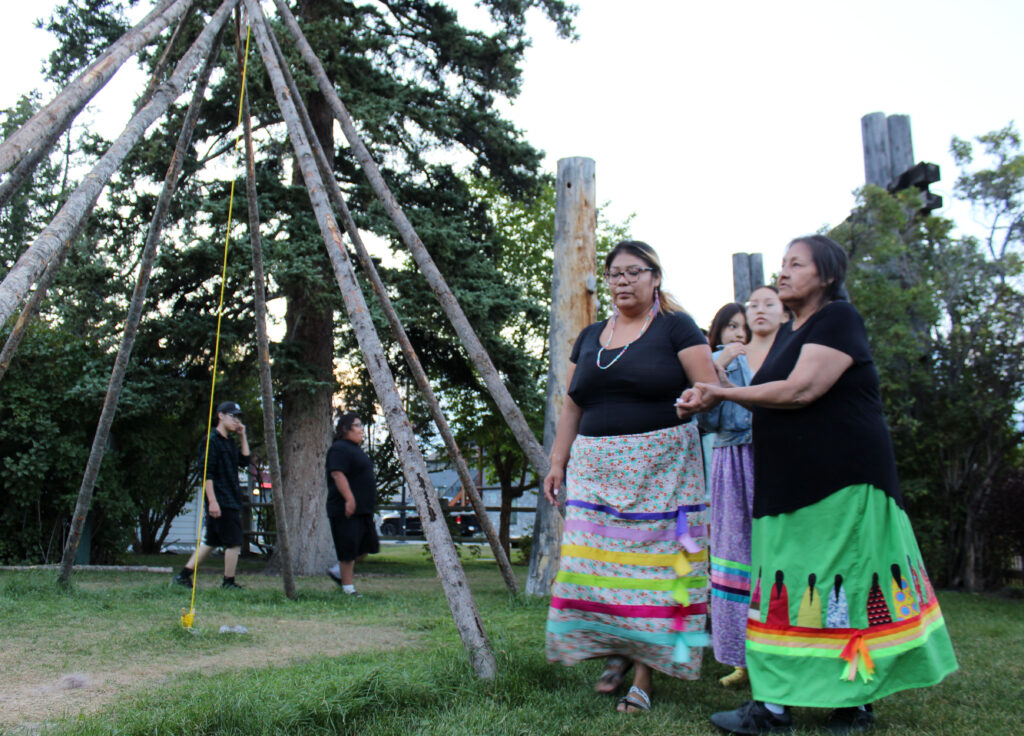
“They grew up still living in tents and tipis in the early 1900s. My great-grandfather was actually present at the signing of Treaty 7 at Blackfoot Crossing,” he says. “The stories we share here are passed down from generation to generation.
“They grew up still living in tents and tipis in the early 1900s. My great-grandfather was actually present at the signing of Treaty 7 at Blackfoot Crossing,” he says. “The stories we share here are passed down from generation to generation.
“What Ron is doing is giving us space to tell our story,” he says. “I think this would help not only the people who come visit here, but also young Stoney Nakoda people who come here will be learning as well.”
Ronine and Travis practise traditional roles when it comes to the tipi set up. Ronine says the women prepare everything inside the tipi, while the men take care of preparing what is used outside.
Traditional outfits and hides, prepared by the women, provide creative teaching tools for the interpretive program. The traditional weaponry is also a great topic of conversation. Ronine says their plans are to keep expanding what they offer into the future.
“It is just the beginning; we are going to go big,” she says, with a laugh. “Go big or go home.”
Over the fall and winter, the museum has chosen to leave the poles of the tipi on the site. It may not be apparent to the average person passing by on the busy downtown Main Street, but this tipi being where it is, is a powerful symbol of reclaiming space for Indigenous people in our community.
Before the Indian Act, and before the Treaties were signed, the North West Mounted Police arrived in this part of the world to set the groundwork for western settlement. Their presence, says Ron, helped build the railway.
Policeman’s Creek gets its name from its location next to the Barracks. Its purpose was to enforce the pass system on the Stoney Nakoda. The local police were also used to forcibly remove Indigenous children from their families and take them to residential schools.
“For us to put this here, for me as a historian, is really significant in the sense that we are claiming back what may have been taken away or not allowed,” says Ron.
“Here we are within the historic confines of the traditional NWMP paddock. We are making a statement with this; from the beginning of Canmore, this was not allowed and now we are bringing this back.”
Ron added that the tipi also creates a safe place for Stoney Nakoda in the community. For Travis, it is a sign of resistance. He noted the Stoney Nakoda at one time were not allowed to come to Canmore at all.
“I see it as a form of resistance,” he says. “We are still to this day fighting. Ever since we made contact with the Europeans, we have been fighting a battle. With this tipi being here, we are showing we are still here and still fighting for the rights of our people.”
Nicole Fougère, program director at artsPlace in downtown Canmore, has been working with Stoney Nakoda Elders, families and community members as well. The different programs created, or still in the works, to foster relationship building between the two communities has been life-enriching for Nicole and welcomed by everyone involved.
“We all live together on this land at this time, and I feel it is a really important part of reconciliation work to acknowledge the fullness of the history of this land, including honouring and acknowledging the people who have lived on this land since time immemorial,” she says.
“ArtsPlace is a community arts centre – focus on the word community. And the community that artsPlace serves in the community of the Bow Valley and the Bow Valley includes, of course, the Stoney Nakoda as well as Banff, Canmore and the other communities.”
Opportunities to learn and connect with Stoney Nakoda culture and neighbours are provided regularly. The cultural learning circles and the annual Smalleyes family A Stoney Christmas show, are two examples of programming that amplify Indigenous voices, experiences, and culture.
“In the family history of the Smalleyes, their family has always been responsible for leading the round dance at Christmas time,” she says. “In the Stoney Nakoda community, there have been times when that round dance has not been allowed to happen.
“The Smalleyes family believes in building community through traditional song and dance and that is why the Stoney Christmas Story is so important to them. It is a legacy of multiple generations of family members leading heartwarming cultural activities at Christmas time.”
In 2019, Nicole assisted the family with the creation of an original dramatic performance – Seven Stars. Funds have been found to produce the play and perform it in local schools and at the Whyte Musuem of the Canadian Rockies in Banff.
“As the program director at artsPlace, I am personally really excited that children all over the Bow Valley can be delighted by the beautiful song and dance of the Smalleyes family, but also learn reconciliation practices as part of their regular school life,” she says.
The arts centre is also working with Juno-award winning singer and songwriter Leela Gilday. Born and raised in Yellowknife, NWT, the Dene musician has released five solo albums.
She has agreed to partner with the program, which aims to bring musical workshops to Stoney Nakoda students – culminating in three live-streamed concerts.
“She is an extraordinary national inspiration and I feel bringing her vitality into this community will be uplifting for everyone, including for Stoney Nakoda children and youth,” Nicole says.
For current program details and schedules visit: @Nakota Îtipi n Ryder Style Craft, artsplacecanmore.com and canmoremuseum.com
